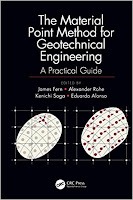Fine GEO5 2020: Professional Package
GEO5 [Size: 1.05 GB] is a set of standalone programs that allows you to solve most of the geotechnical tasks. All programs have a similar user interface and are able to exchange data with each other. Each of them performs a comprehensive check of a specific type of design.
Key features: Stability Calculations - Check the stability of slopes, rock walls and fortified embankments. + Fencing structures - designing and checking the enclosing structures of foundation pits, underground structures. + Walls and supporting structures - Due diligence of walls and gabion structures. + Shallow foundations - checking the bearing capacity and settlement of individual strip and slab foundations. + Deep foundations - checking the bearing capacity and settlement of piles and pile clusters. + Settlement - calculation of settlement and consolidation, settlement of shallow and deep foundations. + Tunnels and Shafts - Analyze tunnels, underground structures, and vertical shafts. + Geological surveys - creating a model of the tunnel and base layers based on geological survey data. + Field Tests - Structural calculations based on field test data (SPT, CPT, DMT, PMT)
Key features: Stability Calculations - Check the stability of slopes, rock walls and fortified embankments. + Fencing structures - designing and checking the enclosing structures of foundation pits, underground structures. + Walls and supporting structures - Due diligence of walls and gabion structures. + Shallow foundations - checking the bearing capacity and settlement of individual strip and slab foundations. + Deep foundations - checking the bearing capacity and settlement of piles and pile clusters. + Settlement - calculation of settlement and consolidation, settlement of shallow and deep foundations. + Tunnels and Shafts - Analyze tunnels, underground structures, and vertical shafts. + Geological surveys - creating a model of the tunnel and base layers based on geological survey data. + Field Tests - Structural calculations based on field test data (SPT, CPT, DMT, PMT)



















